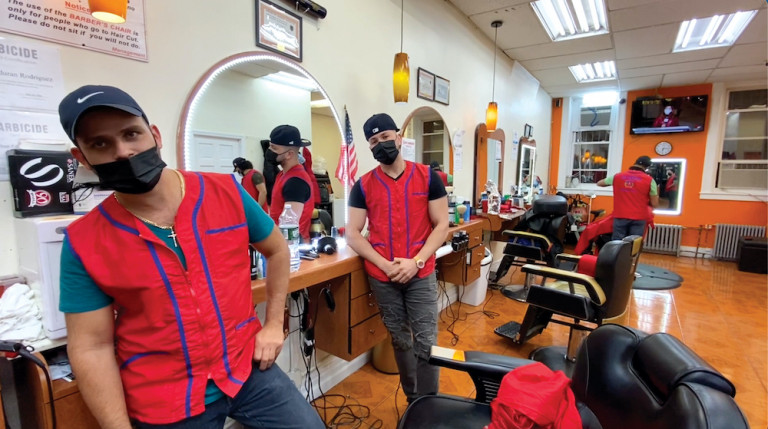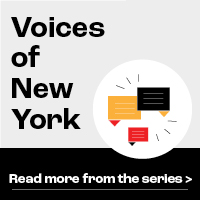Undoubtedly, the industry is one of the sectors hit hardest by the pandemic.

Luz Karine Vargas for Queens Latino
Estevan Durán and José Fernández, from Ricky’s Barber Shop.This article originally appeared in Queens Latino. It was translated by Carlos Rodriguez.
“Beauty salons were closed for four months, and the situation is very hard,” said Ester Núñez, from Aloe Beauty Salon. Núñez, who works seven days a week, said that business is quite slow and that, if it does not pick up, “many of us will have to close.”
Núñez charges $50 for a haircut and blow dry, and $70 for color.
An estimated 20,000 salons and barbershops have closed or are likely to close in New York City due to the coronavirus pandemic. The number represents 42 percent of all such establishments, of which 94.2 percent are small businesses employing between one and five people.
According to a report by the Professional Beauty Association, in 2019 the beauty salon industry generated $57 billion in revenue across the country. Still, 72 percent of its employees said that their wages are just enough to live week-to-week, and only 23 percent of them have health insurance.
It only takes walking through the streets of Queens to see the proliferation of beauty salons and barbershops. Big, medium or small, most of them are either closed or have few customers due to the coronavirus.
Undoubtedly, the industry is one of the sectors hit the hardest by the pandemic. Estimated at some $532 billion worldwide, the beauty salon business is tackling the situation in various ways. According to [management consulting firm] McKinsey & Company, the beauty industry could see a 25 percent drop across the five continents.
Based on the time it has taken the beauty industry to come back from previous crises, some experts predict that the sector is not likely to recover from this major blow in at least three to five years.
There are nearly 50,000 beauty salons and barbershops in the United States, formal and informal, and they employ some 150,000 people.
Estevan Durán and José Fernández work 50 hours per week at Ricky’s Barber Shop, and charge $20 for a haircut.
“Because of the pandemic, many people do not want to come in to get their hair cut. We will go out of business if customers do not return,” said Durán.
The uncertainty is ongoing, as people continue to be afraid to go to crowded places and possibly catch the virus. Some salons take customers by appointment only, while others have halved the number of customers they serve to follow hygiene protocols. Haircuts are now being done by standing next or behind the customer, not in front, to avoid face-to-face interaction.
Many people have resorted to cutting their own hair, driving up hair-styling tools sales. Others have learned to dye their own hair, to the disadvantage of salons and the benefit of beauty supply stores. The industry is transforming quickly.









